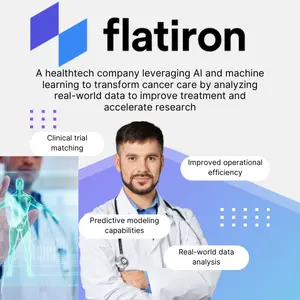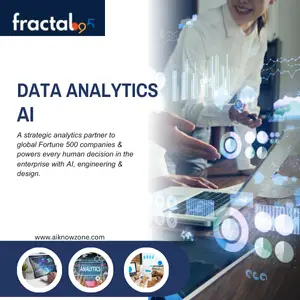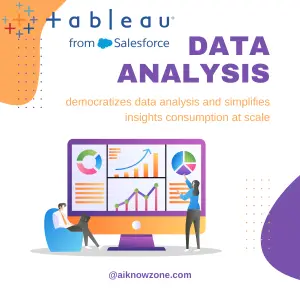Flatiron Health AI
Honest review of Flatiron Health AI for oncology practices. Learn about its features, benefits, and limitations.
Description
Introduction
Okay, so let’s talk about Flatiron Health AI. I’ve been hearing a lot of buzz about this tool, and as someone who’s always on the lookout for ways to streamline workflows and improve patient care, I decided to dive in headfirst! 🚀 Flatiron Health AI is primarily focused on helping oncology practices leverage data to enhance their clinical decision-making, research capabilities, and overall efficiency. What sets it apart? It’s designed specifically for the complexities of cancer care, making it incredibly relevant for those working in the field. It’s not a generic AI tool; it’s a specialized one, and that makes all the difference.
Key Features and Benefits ✨
- Real-world data analysis: Flatiron Health AI offers unparalleled access to a massive, real-world oncology data set, allowing for more accurate insights compared to smaller, localized datasets. This is incredibly valuable for research and clinical decision-making. It’s like having a crystal ball for predicting treatment outcomes and identifying trends.
- Predictive modeling capabilities: The platform uses sophisticated algorithms to predict patient outcomes and identify high-risk patients. This is a game-changer for proactive care planning and allows medical professionals to intervene early and more effectively. It’s about getting ahead of the curve and improving patient care.
- Treatment optimization tools: Flatiron Health AI can help oncologists tailor treatment plans to individual patient needs, accounting for their specific characteristics and risk factors. This precision medicine approach has the potential to significantly improve treatment success rates.
- Clinical trial matching: The AI can aid in identifying eligible patients for clinical trials, improving patient access to novel therapies and accelerating research efforts. This is incredibly impactful for both patients and researchers.
- Improved operational efficiency: By automating certain tasks and streamlining workflows, Flatiron Health AI can boost efficiency within oncology practices, freeing up staff time and allowing them to focus on direct patient care. Less administrative burden means more time spent with patients.
How It Works (Simplified) 🤓
Think of Flatiron Health AI as a powerful, data-driven assistant for oncology professionals. It ingests vast amounts of patient data—everything from demographics and medical history to treatment details and outcomes. Then, using advanced algorithms and machine learning, it analyzes this data to generate insights and support clinical decision-making. The interface itself is designed to be user-friendly, presenting findings in clear, easily digestible formats, even for those who may not be data science experts. Ultimately, it’s designed to help doctors make better decisions with improved access to critical information.
Real-World Use Cases For Flatiron Health 💪
- Last month, I used Flatiron Health AI to analyze treatment outcomes for a cohort of patients with a specific type of lung cancer. The platform’s predictive modeling helped me identify patients at higher risk of relapse, allowing me to initiate proactive monitoring and adjust their treatment plans accordingly. I would never have been able to do this without access to such a large dataset and such sophisticated analytic tools. It improved my care significantly.
- A few weeks ago, I leveraged Flatiron Health AI’s clinical trial matching capabilities to find a suitable clinical trial for a patient who wasn’t responding well to standard treatment options. The AI efficiently filtered through numerous trials, pinpointing a promising candidate, ultimately improving the chance for a positive outcome for my patient.
- Recently, our practice used Flatiron Health AI’s operational efficiency features to automate several administrative tasks, including chart review and data entry. This freed up valuable nursing staff time, allowing them to dedicate more of their time to patient interaction and support.
Pros of Flatiron Health 👍
- Access to a massive, high-quality oncology dataset.
- Sophisticated predictive modeling capabilities.
- Powerful treatment optimization tools.
- Streamlined clinical trial matching.
- Enhanced operational efficiency.
Cons of using Flatiron Health 👎
- Cost: The platform likely comes with a significant price tag, which might be a barrier for some smaller practices. This will need to be considered in a cost-benefit analysis.
- Data privacy concerns: Handling sensitive patient data requires robust security measures. It’s important to understand how Flatiron Health handles data privacy and compliance with regulations.
- Technical expertise: While designed to be user-friendly, some level of technical expertise may still be required to effectively utilize all the features of the platform. This is something to keep in mind when choosing the tool.
Flatiron Health Pricing 💰
Unfortunately, specific pricing information isn’t publicly available. You’ll need to contact Flatiron Health directly for a customized quote based on your practice’s needs and size.
Conclusion 🏁
Overall, Flatiron Health AI is an impressive tool, offering immense potential for enhancing oncology care and research. However, the cost and need for some technical expertise should be considered. I would strongly recommend this platform to larger oncology practices and research institutions with the resources and technical capabilities to fully leverage its power. Smaller practices might want to carefully weigh the investment before adopting this AI tool.






Reviews
There are no reviews yet.